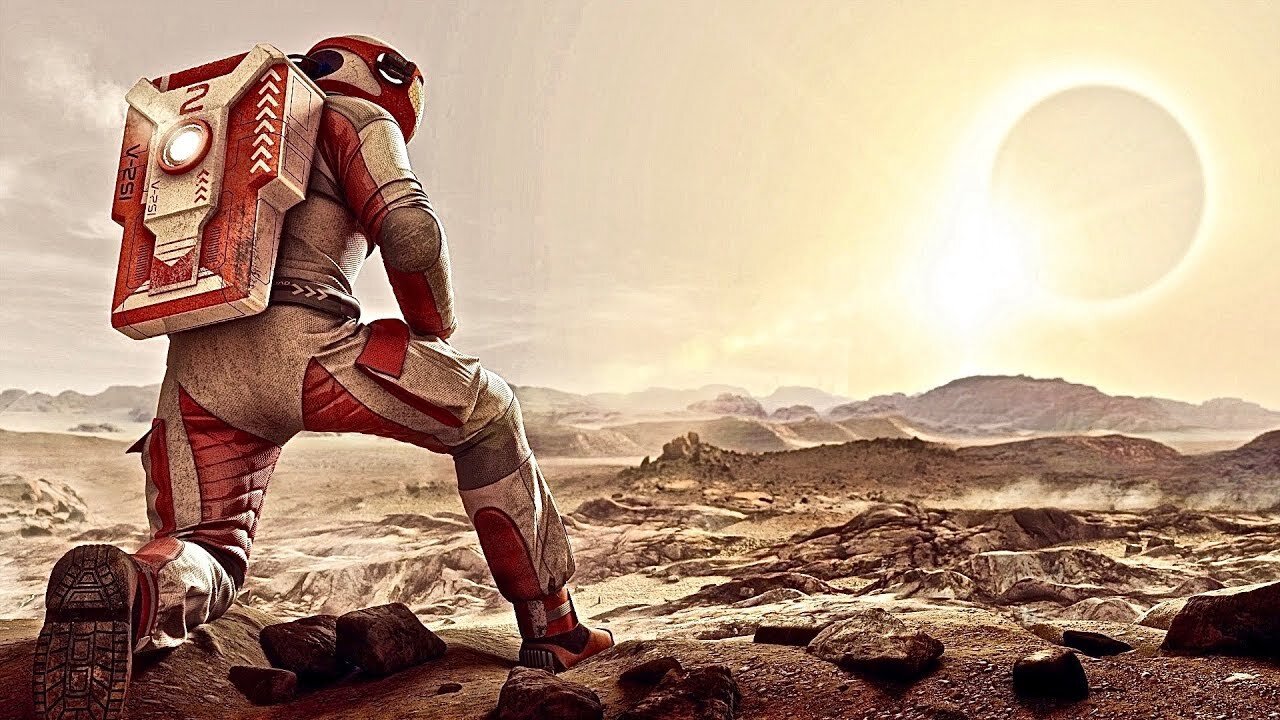Premium Only Content

The Most Dangerous Problem On Mars - High Energy Radiation
Why Space Radiation Matters - Mars has no protective magnetosphere, as Earth does. In addition to regular exposure to cosmic rays and solar wind, it receives occasional lethal blasts that occur with strong solar flares. Outside the protective cocoon of the Earth’s atmosphere is a universe full of radiation – it is all around us. Say the word "radiation" to three different people, and you'll probably get three different reactions. Your aunt may tell you how radiation destroyed her cancer. Your neighbor might mention the "duck and cover" procedures of his day. And your comics-loving friend will explain how gamma rays turned Bruce Banner into The Hulk. Radiation comes in many forms and is all around us, all the time. But what is radiation?
Radiation is a form of energy that is emitted in the form of rays, electromagnetic waves, and/or particles. In some cases, radiation can be seen (visible light) or felt (infrared radiation), while other forms—like x-rays and gamma rays—are not visible and can only be observed with special equipment. Although radiation can have negative effects both on biological and mechanical systems, it can also be carefully used to learn more about each of those systems.
What is Space Radiation?
Space radiation is different from the kinds of radiation we experience here on Earth. Space radiation is comprised of atoms in which electrons have been stripped away as the atom accelerated in interstellar space to speeds approaching the speed of light – eventually, only the nucleus of the atom remains.
Space radiation is made up of three kinds of radiation: particles trapped in the Earth’s magnetic field; particles shot into space during solar flares (solar particle events); and galactic cosmic rays, which are high-energy protons and heavy ions from outside our solar system. All of these kinds of space radiation represent ionizing radiation.
How much Space Radiation are Astronauts Exposed to?
Beyond Low Earth Orbit, space radiation may place astronauts at significant risk for radiation sickness, and increased lifetime risk for cancer, central nervous system effects, and degenerative diseases. Research studies of exposure in various doses and strengths of radiation provide strong evidence that cancer and degenerative diseases are to be expected from exposures to galactic cosmic rays (GCR) or solar particle events (SPE).
Milli-Sievert (mSv) is a form of measurement used for radiation. Astronauts are exposed to ionizing radiation with effective doses in the range from 50 to 2,000 mSv. 1 mSv of ionizing radiation is equivalent to about three chest x-rays. So that’s like if you were to have 150 to 6,000 chest x-rays.
Why is Ionizing Radiation More Dangerous than Non-Ionizing Radiation?
While non-ionizing radiation is damaging, it can easily be shielded out of an environment as is done for UV radiation. Ionizing radiation, however, is much more difficult to avoid. Ionizing radiation has the ability to move through substances and alter them as it passes through. When this happens, it ionizes the atoms (knocks electrons out of them) in the surrounding material with which it interacts.
Ionizing radiation is like an atomic-scale cannonball that blasts through material, leaving significant damage behind. More damage can also be created by secondary particles that are propelled into motion by the primary radiation particle.
The particles associated with ionizing radiation in space are categorized into three main groups relating to the source of the radiation: galactic cosmic rays, solar flare particles, and radiation belt particles (Van Allen Belts) trapped in space around the Earth.
Music: Black Wind (Original Mix) by Dhruva Aliman
Amazon- https://amzn.to/2MbZ3TF
https://music.apple.com/us/artist/dhruva-aliman/363563637
https://dhruvaaliman.bandcamp.com/album/snooper
http://www.dhruvaaliman.com/
Spotify - https://open.spotify.com/artist/5XiFCr9iBKE6Cupltgnlet
-
 2:53
2:53
Seeker Land
1 month agoHow 14 Wolves Changed The Path Of Rivers in Yellowstone Park - Amazing True Story
48 -
 2:34:02
2:34:02
Barry Cunningham
5 hours agoLISA COOK | ADAM SCHIFF | LETITIA JAMES | ARE THEY BEING SACRIFICED BY THE DEEP STATE?
68.4K42 -
 1:36:19
1:36:19
Flyover Conservatives
13 hours agoOnly 17% of Millennials Hit These 5 Adult Milestones—Why?; What If Childhood Trauma Is Behind Your Health Problems? - Dr. Troy Spurrill | FOC Show
18.6K3 -
 4:49:04
4:49:04
HogansAlleyHero
15 hours ago💥CHASING DOPAMINE💥✅TRUMP SAYS BATTLEFIELD IS THE BEST✅
24.7K1 -
 1:57:40
1:57:40
MattMorseTV
5 hours ago $0.66 earned🔴Trump just SHATTERED the PROJECTIONS.🔴
42.1K33 -
 2:32:19
2:32:19
megimu32
4 hours agoOTS: From Star Search to Superstardom
29K4 -
 1:56:21
1:56:21
Joker Effect
3 hours agoInterviewing GREENMAN! Looks like he is coming to Rumble! Let's give him a warm welcome! REAL TALENT
17.1K1 -
 1:07:21
1:07:21
Anthony Rogers
10 hours agoEpisode 380 - Is Pain All In Your Head?
11.9K3 -
 1:46:17
1:46:17
Glenn Greenwald
8 hours agoGlenn Takes Your Questions on Censorship, Epstein, and More; DNC Rejects Embargo of Weapons to Israel with Journalist Dave Weigel | SYSTEM UPDATE #505
112K7 -

Jokeuhl Gaming and Chat
9 hours agoHelldivers 2 - Spreading Democracy w/ Ryker
10.5K1